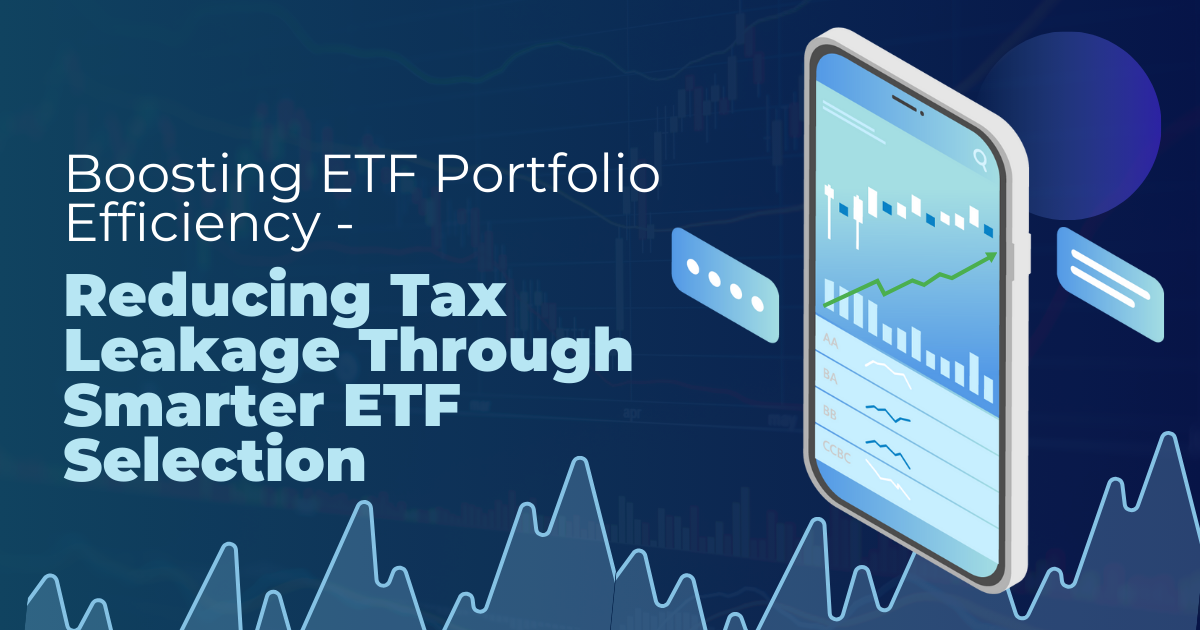Hurdle rate
Table of Contents
Hurdle rate
Evaluating the possible risks and benefits is a smart idea before investing in a business or project. The hurdle rate is one strategy for doing this. You may use this investing tool to estimate the anticipated rate of return necessary for an investment to be risk-acceptable.
What is a hurdle rate?
The hurdle rate is the minimum or least acceptable rate of return on a project or investment. In other words, it is the required rate of return that a company must earn on investment to justify the investment. This is sometimes referred to as the minimum acceptable rate of return, the target rate or the required rate of return. It is expressed in percentage form.
Understanding hurdle rates
A corporation must anticipate a rate of return that meets or surpasses the hurdle rate before moving forward with an investment. An investment with returns below the threshold is often viewed as either too hazardous to be justified or, in some situations, less profitable than other options.
A business may develop a basic rate of return that it needs from feasible initiatives to define its hurdle rate institutionally. Alternatively, it may employ a project-specific hurdle rate to evaluate each project in light of the present situation.
Check the project’s net present value before investing to check if it is positive (NPV). A discounted cash flow evaluation must be conducted in this situation. If the NPV is positive, the estimated rate of return for the project surpasses the hurdle rate. However, the investment may not be worthwhile given the risk if it’s a negative figure.
The WACC, or weighted average cost of capital, is another necessary component. A company’s equity and debt are both measured in this way.
Usage of the hurdle rate
The hurdle rate is used to evaluate investment opportunities and to make decisions about whether or not to proceed with a particular investment. If the expected return on investment is less than the hurdle rate, the investment is not worth pursuing. On the other hand, if the expected return on investment is greater than the hurdle rate, the investment is worth pursuing.
Suppose a company has a hurdle rate of 10% for approved projects and approves a project with an IRR of 14% and minimal risk. So, a substantial and positive NPV or net present value would result from discounting the project’s future cash flows by the hurdle rate of 10%, which would also result in the project’s approval.
Example for hurdle rate
Let’s imagine that Ryan’s Food Factory wishes to determine whether investing in a new machine is a wise decision in order to demonstrate how the hurdle rate works. It predicts that acquiring it might raise sales by 20%. The risk premium is 3%, while the WACC is 12%.
The hurdle rate would be = WACC + risk premium
= 12% + 3%
= 15%
Thus the new machine could be a suitable investment because the expected return on investment (20%) is higher than the hurdle rate (15%).
Disadvantages of a hurdle rate
A few potential disadvantages exist to set a hurdle rate for capital investment projects.
- It can lead to sub-optimal decision-making if the rate is set too high. For example, if the hurdle rate is 10% and a project with a 9% return is rejected, but a project with an 8% return is accepted, this could lead to a sub-optimal outcome.
- The hurdle rate can create a bias against new and innovative projects since these often have higher risks and lower expected returns. This can lead to stagnating new ideas and a lack of innovation within the company.
- The hurdle rate can be difficult to set accurately since it depends on several factors, such as the company’s risk tolerance, the market conditions, and the specific project being considered.
- Furthermore, picking a risk premium is challenging since the value is uncertain. If chosen wrong, an investment or project may yield a higher or lower return than anticipated, leading to inefficient use of resources or the passing of chances.
Frequently Asked Questions
The hurdle rate is important because it is used to evaluate investment opportunities and to make decisions about whether or not to proceed with a particular investment.
When determining the hurdle rate, an investor begins with the cost of capital, the minimum rate of return the company must earn on its investments to satisfy its shareholders. Then, the risk premium is added to account for the probability that the investment will fail.
The cost of capital is the minimum return shareholders expect from investing in the company. It is important to consider that the cost of capital is not the same as the hurdle rate. The cost of capital is the required rate of return on investment, while the hurdle rate is the minimum acceptable rate of return.
The following key factors that must be taken into account in order to calculate the hurdle rate are:
- cost of capital
- return from similar investments
- associated risks
- anything else that may affect the investment
The hurdle rate is often higher, the riskier the investment is. To determine the hurdle rate, an investor adds the risk premium required to account for the probability that the investment would fail to the cost of capital.
The equation for hurdle rate is the cost of capital + risk premium.
In the business world, hurdle rates play a crucial role, particularly in future projects and initiatives. The degree of risk involved in a project influences whether or not a company decides to take it on. The investment is deemed sound if the predicted rate of return exceeds the hurdle rate. In other words, the investor may choose to proceed with an investment if it promises to offer a return that is equal to or greater than the hurdle rate.
Related Terms
- Cost of Equity
- Capital Adequacy Ratio (CAR)
- Interest Coverage Ratio
- Industry Groups
- Income Statement
- Historical Volatility (HV)
- Embedded Options
- Dynamic Asset Allocation
- Depositary Receipts
- Deferment Payment Option
- Debt-to-Equity Ratio
- Financial Futures
- Contingent Capital
- Conduit Issuers
- Calendar Spread
- Cost of Equity
- Capital Adequacy Ratio (CAR)
- Interest Coverage Ratio
- Industry Groups
- Income Statement
- Historical Volatility (HV)
- Embedded Options
- Dynamic Asset Allocation
- Depositary Receipts
- Deferment Payment Option
- Debt-to-Equity Ratio
- Financial Futures
- Contingent Capital
- Conduit Issuers
- Calendar Spread
- Devaluation
- Grading Certificates
- Distributable Net Income
- Cover Order
- Tracking Index
- Auction Rate Securities
- Arbitrage-Free Pricing
- Net Profits Interest
- Borrowing Limit
- Algorithmic Trading
- Corporate Action
- Spillover Effect
- Economic Forecasting
- Treynor Ratio
- Hammer Candlestick
- DuPont Analysis
- Net Profit Margin
- Law of One Price
- Annual Value
- Rollover option
- Financial Analysis
- Currency Hedging
- Lump sum payment
- Annual Percentage Yield (APY)
- Excess Equity
- Fiduciary Duty
- Bought-deal underwriting
- Anonymous Trading
- Fair Market Value
- Fixed Income Securities
- Redemption fee
- Acid Test Ratio
- Bid Ask price
- Finance Charge
- Futures
- Basis grades
- Short Covering
- Visible Supply
- Transferable notice
- Intangibles expenses
- Strong order book
- Fiat money
- Trailing Stops
- Exchange Control
- Relevant Cost
- Dow Theory
- Hyperdeflation
- Hope Credit
- Futures contracts
- Human capital
- Subrogation
- Qualifying Annuity
- Strategic Alliance
- Probate Court
- Procurement
- Holding company
- Harmonic mean
- Income protection insurance
- Recession
- Savings Ratios
- Pump and dump
- Total Debt Servicing Ratio
- Debt to Asset Ratio
- Liquid Assets to Net Worth Ratio
- Liquidity Ratio
- Personal financial ratios
- T-bills
- Payroll deduction plan
- Operating expenses
- Demand elasticity
- Deferred compensation
- Conflict theory
- Acid-test ratio
- Withholding Tax
- Benchmark index
- Double Taxation Relief
- Debtor Risk
- Securitization
- Yield on Distribution
- Currency Swap
- Overcollateralization
- Efficient Frontier
- Listing Rules
- Green Shoe Options
- Accrued Interest
- Market Order
- Accrued Expenses
- Target Leverage Ratio
- Acceptance Credit
- Balloon Interest
- Abridged Prospectus
- Data Tagging
- Perpetuity
- Optimal portfolio
- Hybrid annuity
- Investor fallout
- Intermediated market
- Information-less trades
- Back Months
- Adjusted Futures Price
- Expected maturity date
- Excess spread
- Quantitative tightening
- Accreted Value
- Equity Clawback
- Soft Dollar Broker
- Stagnation
- Replenishment
- Decoupling
- Holding period
- Regression analysis
- Wealth manager
- Financial plan
- Adequacy of coverage
- Actual market
- Credit risk
- Insurance
- Financial independence
- Annual report
- Financial management
- Ageing schedule
- Global indices
- Folio number
- Accrual basis
- Liquidity risk
- Quick Ratio
- Unearned Income
- Sustainability
- Value at Risk
- Vertical Financial Analysis
- Residual maturity
- Operating Margin
- Trust deed
- Profit and Loss Statement
- Junior Market
- Affinity fraud
- Base currency
- Working capital
- Individual Savings Account
- Redemption yield
- Net profit margin
- Fringe benefits
- Fiscal policy
- Escrow
- Externality
- Multi-level marketing
- Joint tenancy
- Liquidity coverage ratio
- Kiddie tax
- Giffen Goods
- Keynesian economics
- EBITA
- Risk Tolerance
- Disbursement
- Bayes’ Theorem
- Amalgamation
- Adverse selection
- Contribution Margin
- Accounting Equation
- Value chain
- Gross Income
- Net present value
- Liability
- Leverage ratio
- Inventory turnover
- Gross margin
- Collateral
- Being Bearish
- Being Bullish
- Commodity
- Exchange rate
- Basis point
- Inception date
- Riskometer
- Trigger Option
- Zeta model
- Racketeering
- Market Indexes
- Short Selling
- Quartile rank
- Defeasance
- Cut-off-time
- Business-to-Consumer
- Bankruptcy
- Acquisition
- Turnover Ratio
- Indexation
- Fiduciary responsibility
- Benchmark
- Pegging
- Illiquidity
- Backwardation
- Backup Withholding
- Buyout
- Beneficial owner
- Contingent deferred sales charge
- Exchange privilege
- Asset allocation
- Maturity distribution
- Letter of Intent
- Emerging Markets
- Cash Settlement
- Cash Flow
- Capital Lease Obligations
- Book-to-Bill-Ratio
- Capital Gains or Losses
- Balance Sheet
- Capital Lease
Most Popular Terms
Other Terms
- Real Return
- Protective Put
- Perpetual Bond
- Option Adjusted Spread (OAS)
- Non-Diversifiable Risk
- Merger Arbitrage
- Liability-Driven Investment (LDI)
- Income Bonds
- Guaranteed Investment Contract (GIC)
- Flash Crash
- Equity Carve-Outs
- Cost Basis
- Deferred Annuity
- Cash-on-Cash Return
- Earning Surprise
- Bubble
- Beta Risk
- Bear Spread
- Asset Play
- Accrued Market Discount
- Ladder Strategy
- Junk Status
- Intrinsic Value of Stock
- Interest-Only Bonds (IO)
- Inflation Hedge
- Incremental Yield
- Industrial Bonds
- Holding Period Return
- Hedge Effectiveness
- Flat Yield Curve
- Fallen Angel
- Exotic Options
- Execution Risk
- Exchange-Traded Notes
- Event-Driven Strategy
- Eurodollar Bonds
- Enhanced Index Fund
- EBITDA Margin
- Dual-Currency Bond
- Downside Capture Ratio
- Dollar Rolls
- Dividend Declaration Date
- Dividend Capture Strategy
- Distribution Yield
- Delta Neutral
- Derivative Security
- Dark Pools
- Death Cross
- Fixed-to-floating rate bonds
- First Call Date
Know More about
Tools/Educational Resources
Markets Offered by POEMS
Read the Latest Market Journal

Recognising Biases in Investing and Tips to Avoid Them
Common biases like overconfidence, herd mentality, and loss aversion influence both risk assessment and decision-making....

What is Money Dysmorphia and How to Overcome it?
Money dysmorphia happens when the way you feel about your finances doesn’t match the reality...

The Employer’s Guide to Domestic Helper Insurance
Domestic Helper insurance may appear to be just another compliance task for employers in Singapore,...

One Stock, Many Prices: Understanding US Markets
Why Isn’t My Order Filled at the Price I See? Have you ever set a...

Why Every Investor Should Understand Put Selling
Introduction Options trading can seem complicated at first, but it offers investors flexible strategies to...

Mastering Stop-Loss Placement: A Guide to Profitability in Forex Trading
Effective stop-loss placement is a cornerstone of prudent risk management in forex trading. It’s not...

Boosting ETF Portfolio Efficiency: Reducing Tax Leakage Through Smarter ETF Selection
Introduction: Why Tax Efficiency Matters in Global ETF Investing Diversification is the foundation of a...

How to Build a Diversified Global ETF Portfolio
Introduction: Why Diversification Is Essential in 2025 In our June edition article (https://www.poems.com.sg/market-journal/the-complete-etf-playbook-for-singapore-investors-from-beginner-to-advanced-strategies/), we introduced...









